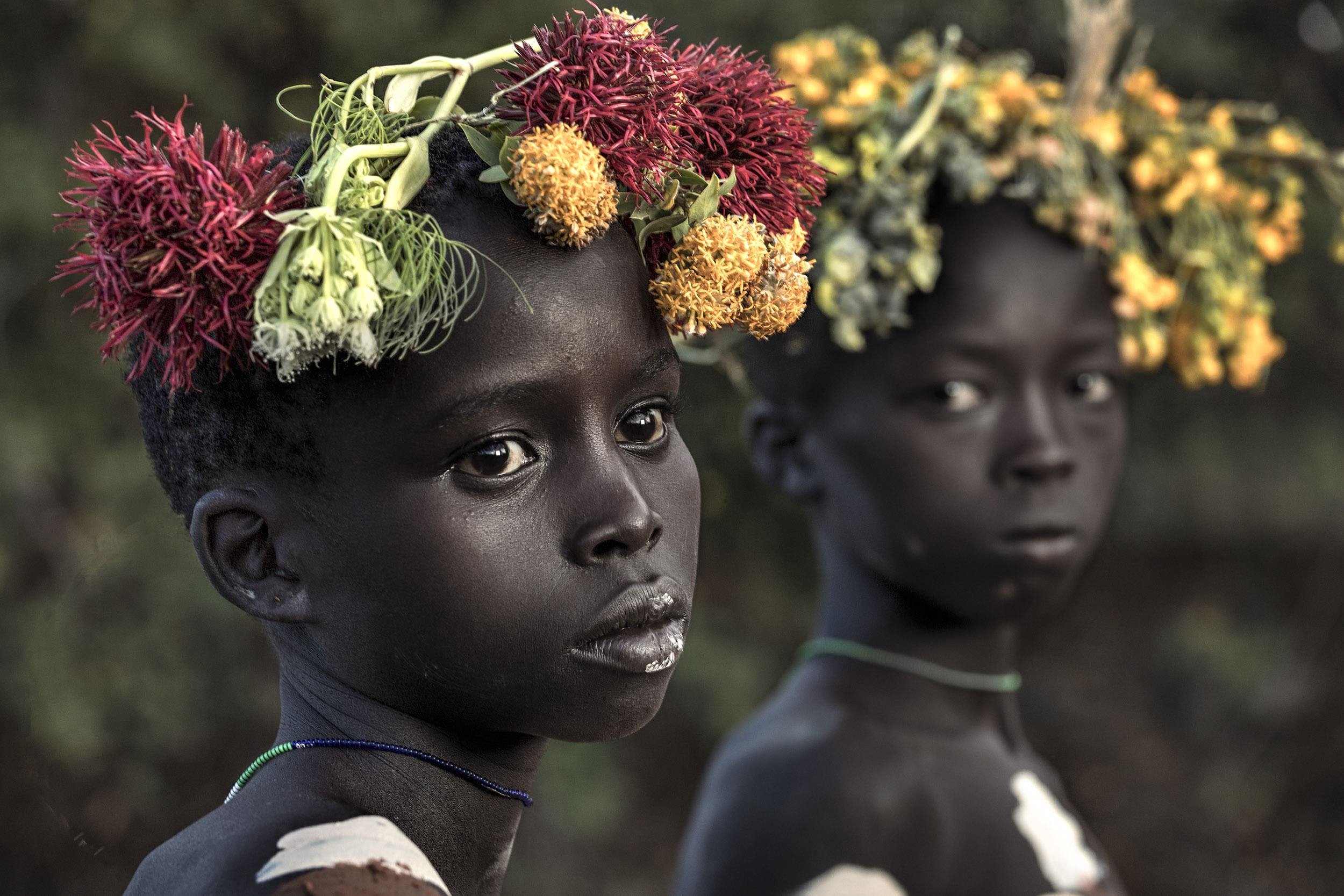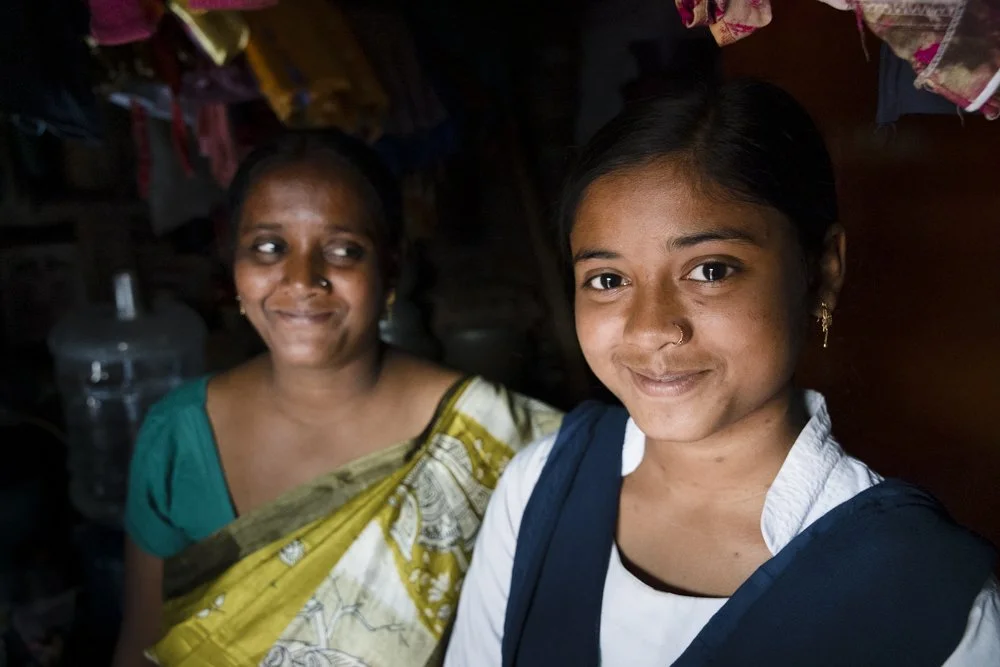World Humanitarian Photography Day: A Tribute To Humanity
Bigiri and Bagoshi. Photograph: ©Steven Wade Adams, Omo Valley, Ethiopia 2016.
As World Humanitarian Photography Day approaches on August 19, I find myself contemplating not only the many contributions to Humanitarian Photography, but also the recent seismic waves which have shaken the humanitarian sector itself, which in turn has had monumental negative impact to so many people in the US and around the world.
A little over one year ago, I made the transition from corporate life to full-time humanitarian photography, and it has been an honor to devote myself to supporting the amazing people and organizations for which compelling, authentic and accurate humanitarian photography and visual storytelling are critical to to their missions.
While the business models and strategies of many of these organization are actively evolving, I am hopeful that new models for meeting humanitarian needs will begin to emerge. In fact, I am finding myself spending a greater percentage of my time working with clients to define/refine business and communication plans to meet current challenges. This has in turn resulted in sizable shifts in approaches to visual storytelling through photography and supporting videography.
In this article, I feature some of the humanity photos I made this year as well as a few older ones, emphasizing the purpose behind them.
Humanity Through Visual Storytelling
Through my photographic work as an international humanitarian photographer, it is my personal mission to continue reminding the world of our common humanity.
Humanitarian photography is not just capturing moments for the sake of capturing them. It’s about distilling complex realities into visual language that can travel across borders and biases to be relatable to targeted stakeholders. It’s about using the camera as a tool to help people in all places around the world to be visible, relatable, and unforgettable, especially those whose voices might otherwise be overlooked.
In addition to my work for clients, I am excited to be initiating a long-term personal project in Guatemala. I will write more on this soon as I travel to the country and begin this work in earnest.
Humanity Photography: A Powerful Tool to Foster Connection
The pride Madhumita’s mother has in her daughter was obvious. Photograph: ©Steven Wade Adams, West Bengal, India 2025
“You can really see the humanity in your photographs.” That’s the compliment that means the most to me. Not because it flatters, but because it affirms the goal of my work: to make viewers feel something real especially across differing cultures and ethnicities. While film is popular and can undeniably evoke strong emotions by engaging both auditory and visual senses, I believe that still photography allows one to slow down and contemplate the feeling of a very specific meaningful moment.
In a world where deeper understanding across humanity is more important than ever, cultural and humanitarian photography serves as a powerful tool to bridge vast gaps and foster connections.
Captivating images that illustrate our shared humanity can, at the same time, showcase the human kaleidoscope of traditions, customs, and rituals that represent the learned behaviors that are the essence of culture.
I am always honored to contribute my small part to help in preserving history, celebrating diversity, and promoting unity. This work and the people I meet provide a unique opportunity to stand aside them in awe of their resilience, strength, and beauty, regardless of circumstances.
In the best of circumstances, a shared connection that is palpable in the interaction is more easily transmitted as universal in the final images. I find that when I empathize most closely with the people in the situation and they possess a shared value of interaction, good images are far easier to make. I always seek to incorporate these ideas into my work, and they are especially strong driving forces in my personal projects.
My visit to the C3I program in West Bengal. India earlier this year, was characterized by a series of such interactions. One that stands out to me was the interaction that resulted in the image above of Madhumita and her mother as they explained the pride they have in the opportunities afforded her in a C3I sponsored school program to overcome social inequity by emphasizing girls empowerment and focusing on health and finance and computer literacy. More about this program is described in my earlier post.
Later in West Bengal I visited a women’s collective known as the Chandipur Alor Disha Village Level Organization (VLO) which was the subject of an article I recently published. I spent a lot of time just hanging out with these women, learning about their lives and their efforts to improve their communities. That is tough to do in every situation when travel and timelines get in the way, but is a solid reminder that the most meaningful human interactions happen when one slows down and takes time to more authentically interact..
Visual Storytelling With Purpose
Whether I’m documenting girls reclaiming their right to education or community health workers providing critical care, I know the image alone isn’t the end. It’s the invitation to know more about these human beings and the amazing things they are doing, as they use their passion and intellect to strive for a better life for themselves and their communities.
Celebrating baby’s first solid food is an opportunity to teach the entire community about nutrition and health. Photograph: ©Steven Wade Adams, Bihar, India 2017
The image above is part of a larger narrative I was following in India where a massive community-led effort in Bihar is creating lasting impact by modifying behaviors that are resulting in enhanced health outcomes in remote communities.
The support this young mother was receiving from the local community, the setting, the attentiveness but also the sheer joy of the participants all tell a story of humanity and local leadership in action.
These moments remind me that my role isn’t to insert the narrative. It’s to help amplify one that’s already unfolding, often quietly, courageously, and powerfully.
C3 staff member, Fiza Alam Zaidi, addresses an assembly of women at the “Mahila Gram Sabha” event in East Champaran, Bihar for International Women’s Day. Photograph: ©Steven Wade Adams, Bihar, India 2025
This photo here is part of a longer story of a village coming together to learn, speak, and demand better health outcomes for women and children. The dust in the air, the collective focus, the dignity of the speaker—these aren’t accidents, but a reward for observing, engaging and connecting.
A particular humanitarian story might begin with images that reflect a certain challenging reality, but the focus I find most compelling is those that celebrate resilience, warmth, agency, and dignity as well as hope and promise for a better future for everyone.
When someone sees one of my images and connects with the person inside the frame, that’s visual storytelling doing what it’s intended to do - creating a moment of honest human connection.
Opportunities to Collaborate
If you represent a humanitarian organization with a need for visual stories and to better demonstrate your mission, I would love to connect with discuss your needs and potential collaboration.
I often offer reduced cost or pro bono work with organizations with which I share common goals. I approach each accepted assignment with curiosity and a strategic mindset to align the work with the desired objectives, and optimize the value delivered to your important mission.
From time to time, I also lead immersive humanitarian photography workshops where we explore photography as a tool for ethical narrative-building and global advocacy.
Please reach out and let me know if you have an interest in joining me in the field to learn how to craft stories in a very practical and mission-driven format.
Infant with his mother in rural Bale Zone, Ethiopia. Photograph: ©Steven Wade Adams, Ethiopia 2017.
World Humanitarian Photography Day
On World Humanitarian Photography Day, and every day, I honor all the people in front of my camera lens, the people behind it, and the organizations dedicated to the common humanity that connects us all.
Subscribe to be among the first to hear about my latest work and to stay connected.
Thank you for following my stories and for believing in the importance of humanity within the photographs!
Steven Wade Adams DVM, PhD
Humanitarian Photographer & Visual Storyteller






